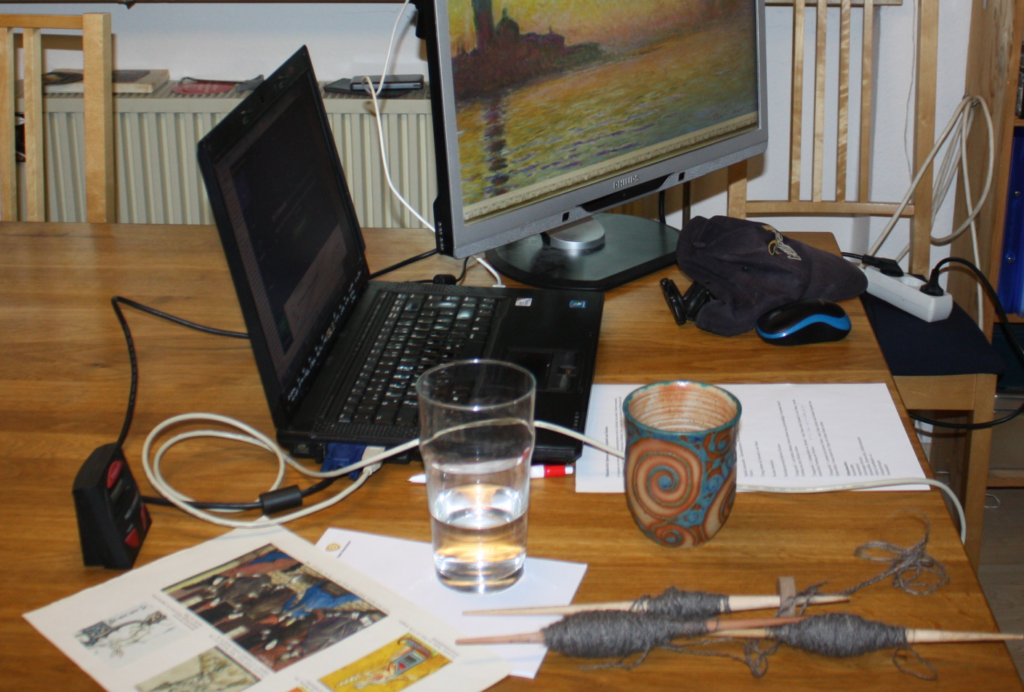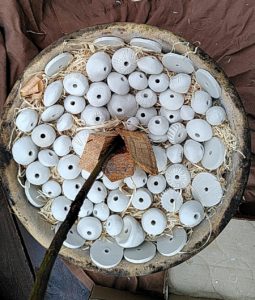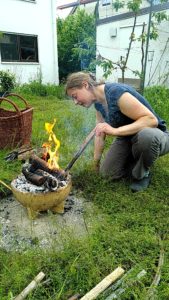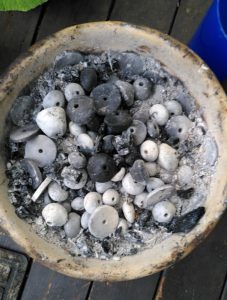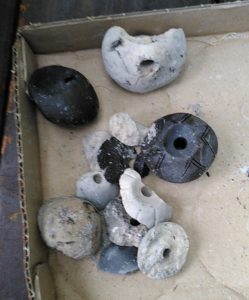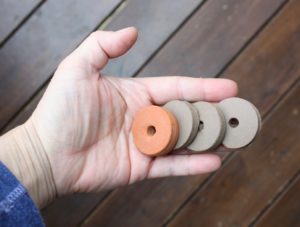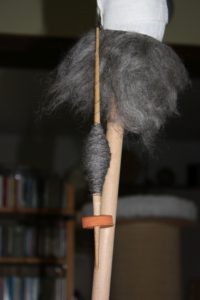So... here's the solution to the camera question: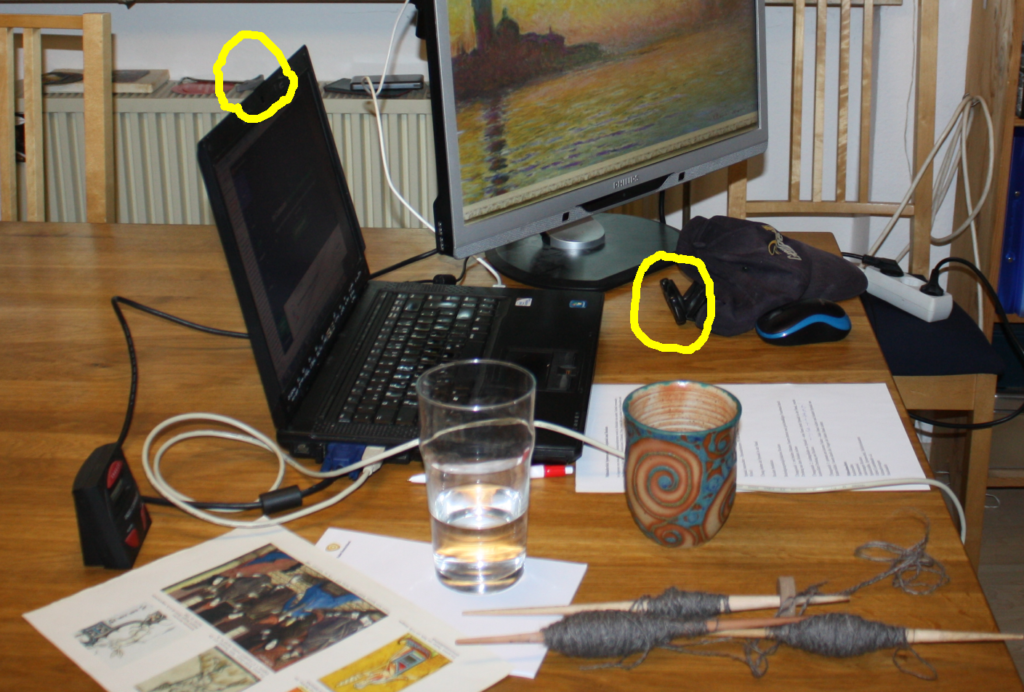
One is, yes, above the screen on my laptop, as would be expected - marked with a yellow circle. One is outside the shot, on a tripod and looking over the upper edge of the extra monitor. The third one is also marked with a yellow circle, and it's fixed to a cap.
Which I wear. Well, not in that picture, there it's just hanging out on the table. When I do wear it, it looks slightly odd:
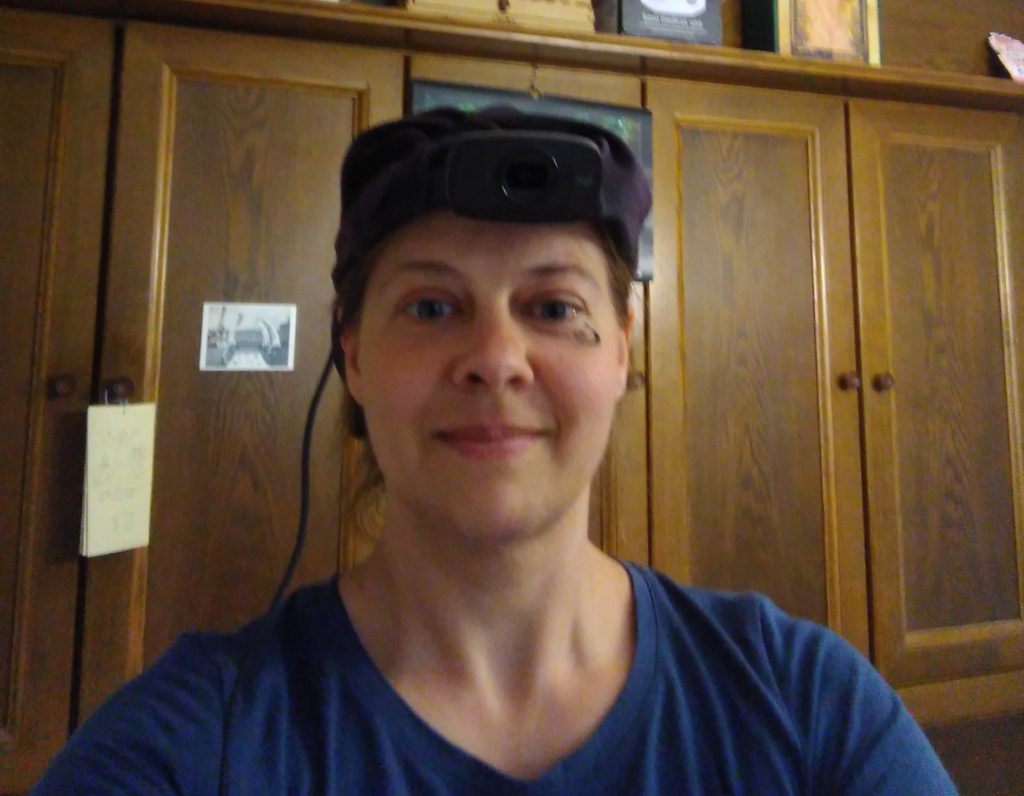
However... it means I can show my workshop participants exactly what I am seeing when I am doing things. Which is exactly what they should be seeing when they are doing the same things. And I am really amazed at the difference it makes to explain stuff! Well worth looking a little daft, with a cap with a long USB cable dangling from it...

One is, yes, above the screen on my laptop, as would be expected - marked with a yellow circle. One is outside the shot, on a tripod and looking over the upper edge of the extra monitor. The third one is also marked with a yellow circle, and it's fixed to a cap.
Which I wear. Well, not in that picture, there it's just hanging out on the table. When I do wear it, it looks slightly odd:

However... it means I can show my workshop participants exactly what I am seeing when I am doing things. Which is exactly what they should be seeing when they are doing the same things. And I am really amazed at the difference it makes to explain stuff! Well worth looking a little daft, with a cap with a long USB cable dangling from it...




